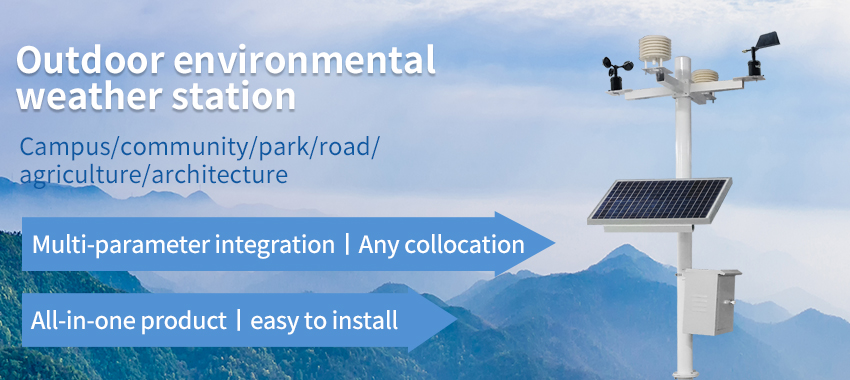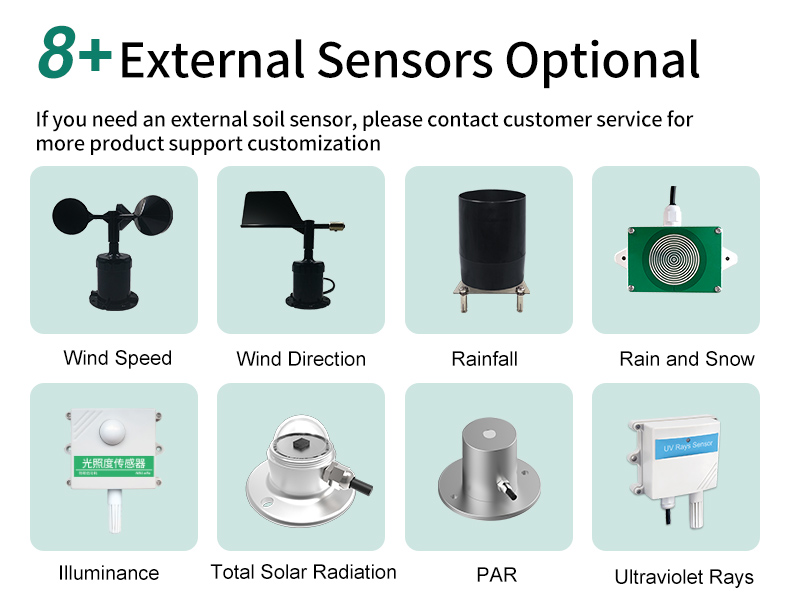Automatic Weather Station
One technology that is important to modern agriculture is automatic weather stations. These sophisticated devices are designed to provide real-time data on atmospheric conditions such as temperature, humidity, rainfall, wind speed and solar radiation. In this article, we’ll explore how automated weather stations can help farmers and growers maximize agricultural yields and improve operational efficiency.

Understanding Automatic Weather Station
Automatic weather station (AWS) are advanced meteorological instruments that can measure a wide range of atmospheric variables. They contain various sensors that work together to provide accurate and timely readings of weather conditions, making them an invaluable tool for agriculture.

The sensors that are typically included in an AWS include:
Temperature sensor: measures air temperature, soil temperature, or water temperature.
Humidity sensor: measures relative humidity in the air.
Precipitation sensor: records rainfall, snowfall, or other forms of precipitation.
Wind speed sensor: measures the speed of wind movement.
Solar radiation sensor: measures incoming solar radiation and can calculate the evapotranspiration rate.
These individual sensors work together in a coordinated system, providing real-time, continuous measurements of weather data, which can be used for numerous purposes. Some AWS models also offer additional functionalities, such as air pressure measurement, leaf wetness sensors, frost alarms, and other features.
Maximizing Yield through Data Analysis
The primary benefit of using AWS in farming is the ability to use the data collected to make informed decisions on crop management, irrigation, and other relevant practices. With real-time data, farmers can adjust their operations to maximize yield while minimizing waste. For example:
Irrigation scheduling:
Through the use of temperature, humidity, and precipitation sensors, Automatic Weather Station systems can analyze current weather conditions and predict future trends. This can help farmers decide when to irrigate crops and how much water is needed for optimal results.
Adjusting Fertilizer Use:
The increasing problem of fertilizer runoff and environmental pollution has been a major challenge in modern agriculture. By monitoring weather conditions such as rainfall, temperature, and solar radiation, along with soil moisture measurements, farmers can optimize their fertilizer application rates, avoiding over or under-fertilizing the soil.
Disease Control:
Automatic Weather Station can also be used to monitor leaf wetness and identify the onset of plant disease. With proper analysis, farmers can take timely action to contain the spread of disease before it becomes prevalent.
Yield Estimation:
By analyzing historical climate data and correlating it with crop yield data, Automatic Weather Station can help predict expected yields for specific crops and enable growers to plan accordingly.

Reduced Risk and Improved Efficiency:
Automatic weather stations offer significant benefits to farmers in terms of saving time, labor, and reduced risk. In traditional farming methods, a farmer would need multiple devices to get accurate readings of weather variables. AWS systems remove this complication by providing a single automated system that eliminates the need for manual weather recording.
Moreover, AWS can operate 24/7 and capture weather data even during extreme weather events, such as heavy rain or high winds. This can alert farmers to potential risks and allow them to take proactive measures to protect their crops.
Conclusion
Modern farming has become increasingly complex, requiring growers to utilize advanced technology to produce more food on less land and reduce the environmental impact of agriculture. The automatic weather station is one such technology that has proved invaluable to modern agriculture operations.
By providing real-time information on weather variables such as temperature, humidity, wind speed, and precipitation, AWS systems can help farmers make better-informed decisions about crop management, irrigation, and fertilization strategies. Additionally, automatic weather stations can reduce risk, improve efficiency, and increase yields – all crucial factors in a competitive industry. Investing in AWS technology offers opportunities for farmers to operate more sustainably, save time, minimize costs, and protect their crops from extreme weather events.